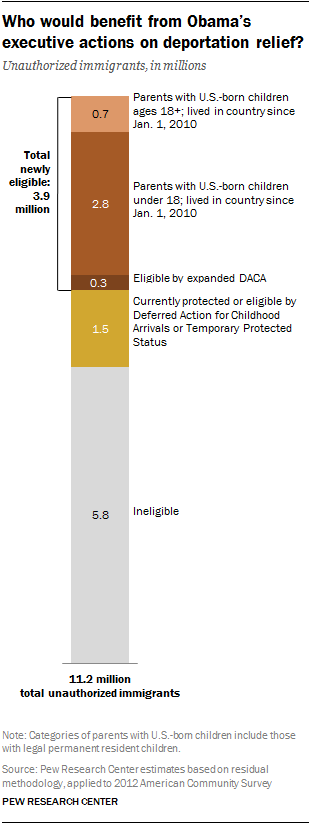 The U.S. Supreme Court is expected in April to hear a lawsuit by Texas and 25 other states that seeks to block presidential executive actions offering deportation relief and work permits to unauthorized immigrants.
The U.S. Supreme Court is expected in April to hear a lawsuit by Texas and 25 other states that seeks to block presidential executive actions offering deportation relief and work permits to unauthorized immigrants.
The executive actions build on 2012’s Deferred Action for Childhood Arrivals (DACA), which granted relief to young adults who came to the U.S. as children. This program has resulted in nearly 700,000 people receiving relief, though advocates said the action did not go far enough.
The expanded programs, which include Deferred Action for Parents of Americans (DAPA) and an expanded DACA, were announced in November 2014 and are on hold due to the lawsuit. They could make an additional 3.9 million unauthorized immigrants eligible for deportation relief and work permits, according to Pew Research Center estimates based on 2012 data.
Here are key facts about those who could be newly eligible under Obama’s 2014 executive actions:
1The largest group who could be eligible for relief are the estimated 3.5 million unauthorized immigrant parents to whom DAPA would apply. Immigrants in this category have lived in the U.S. since Jan. 1, 2010, and have children who either were born in the U.S. or are legal permanent residents.
2Another 330,000 unauthorized immigrants who arrived in the U.S. as children could be eligible for relief under an expanded DACA program. (In addition, 1.5 million are currently protected or eligible under 2012’s DACA or Temporary Protected Status.)
3Immigrants from Mexico would benefit most under the actions providing the most relief. Our analysis found 3.2 million unauthorized immigrants from Mexico would be eligible, representing two-thirds of all those eligible. About 44% of unauthorized immigrants from Mexico could apply for deportation protection, compared with 24% of those from other parts of the world. Unauthorized immigrants from Mexico account for about half of the nation’s unauthorized population.
4The expanded deportation relief programs would have their biggest impact on Western states with large Hispanic populations. Half or more (52%) of the 2.4 million unauthorized immigrants in California are eligible for relief. In Texas, 54% of the state’s 1.7 million unauthorized immigrants are eligible. By contrast, among non-Western states in the U.S. mainland, the shares eligible for relief range from 34% of New Hampshire’s 10,000 unauthorized immigrants to 58% of Arkansas’ 60,000 unauthorized immigrants.
5Not all unauthorized immigrants are covered by the president’s 2014 expanded programs. Those ineligible for deportation relief are more likely to be unmarried and not have U.S.-born children living with them. Among ineligible adult men, 64% are single, compared with 36% among those who are eligible. In addition, ineligible single men outnumber eligible single men by more than two-to-one – 2.1 million to 875,000.



